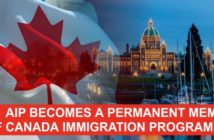Canada has been one of the most popular immigration destinations, particularly for Indians. In this article, we’ll go through the top five ways to immigrate to Canada, whether you’re a student, a worker, or a family member. Everything you need to know is right here.
- EXPRESS ENTRY
The fastest way to enter Canada is through express entry. It is used to manage PR applications for three different immigration schemes based on economic class:
- Federal Skilled Worker Program
- Federal Skilled Trades Program
- Canadian Experience Class
It is graded using a point system that takes into account language, education, work experience, age, job offer, and flexibility. The points are awarded to applicants using a Comprehensive Ranking System (CRS).
Applicants who score at or above the cut-off receive an invitation to apply (ITA). Although a job offer is not required, it does boost your score.
Provincial governments benefit from quick entry as well. A provincial nomination also boosts your score.
For the following documents, you must first create an Express Entry profile.
- Language test results
- Passport or travel document
- Educational credential assessment report
- Provincial nomination (if you have one)
- If you have a written job offer from a Canadian employer, proof of work experience, and a certificate of qualification in a trade vocation issued by a Canadian province or territory (if you have one)
- Proof of funds
If your Express Entry profile is approved, you will be added to the candidate pool. A points-based mechanism will be used to rank you in the Express Entry pool. The candidate with the best score in the pool receives an invitation to apply. You will have 90 days to file your permanent residence application.
2. PROVINCIAL NOMINEE PROGRAM
It is mostly for candidates who wish to reside in a specific province or area. To contribute to the economy of a certain province or region, they must have the necessary skills, education, and work experience.
Provinces have their own immigration schemes that target specific “streams” of people. A province may target students, businesspeople, or skilled employees, for example.
You can apply either on paper or through Express Entry, which is an online application process.
You must apply to the province for nomination under a non-Express Entry stream if you use the paper-based approach. You must file a written application for permanent residence to Immigration, Refugees and Citizenship Canada once you have been nominated (IRCC).
One approach to apply for nomination under the Express Entry process is to contact a province directly. If your province has nominated you, build an Express Entry profile or edit an existing one to reflect your nomination.
Alternatively, you can include your preferred provinces in your Express Entry profile. You can apply to their Express Entry stream if you receive a “notice of interest.”
In either scenario, you must meet the province’s eligibility standards and submit an Express Entry profile. If you are invited to apply, you can do so through IRCC.
The provinces or territories that supply PNP are as follows:
- Alberta
- British Columbia
- Manitoba
- New Brunswick
- Newfoundland and Labrador
- Northwest Territories
- Nova Scotia
- Ontario
- Prince Edward Island
- Saskatchewan
- Yukon
Keep in mind that Quebec lacks a provincial nominee programme. It has its own Canada immigration rules, such as Quebec-selected skilled employees.
To do so, you must apply for a Quebec Selection Certificate from the Quebec government. If you receive the certificate, you can apply for permanent residence with Immigration, Refugees, and Citizenship Canada.




